TI公司的DLP4500數(shù)字微鏡器件 (DMD)是一款數(shù)控 MOEMS(微光機電系統(tǒng))空間照明調制器(SLM),可鎖存,電進/光出半導體器件。DLP4500可生成具有速度,精度和效率的光發(fā)射圖樣,非常適合于使用結構光的3D掃描或度量,擴增實境,顯微鏡,醫(yī)療儀器和光譜分析等應用。本文介紹了DLP4500主要特性,框圖和典型系統(tǒng)框圖以及其DLP 3D打印機主要特性,框圖,電路圖和材料清單.
The DLP4500 digital micromirror device (DMD) is a digitally controlled MOEMS (micro-opto-electromechanical system) spatial light modulator (SLM). When coupled to an appropriate optical system, the DLP4500 can be used to modulate the amplitude and/or direction of incoming light.? The DLP4500 creates light patterns with speed, precision, and efficiency.
Architecturally, the DLP4500 is a latchable, electrical-in/optical-out semiconductor device. This architecture makes the DLP4500 well suited for use in applications such as 3D scanning or metrology with structured light, augmented reality, microscopy, medical instruments, and spectroscopy. The compact physical size of the DLP4500 is well-suited for portable equipment where small form factor and lower cost are important.? The compact package compliments the small size of LEDs to enable highly efficient, robust light engines.
The DLP4500 is one of two devices in the DLP 0.45 WXGA chip set (see ). Proper function and reliable operation of the DLP4500 requires that it be used in conjunction with the DLPC350 controller. See the DLP 0.45 WXGA Chip-set data sheet (TI literature number DLPU009) for further details. shows a typical system application using the DLP 0.45-inch WXGA chip set.
DLP4500主要特性:
0.45-Inch (11.43 mm) Diagonal Micromirror Array
912 × 1140 Array of Aluminum, Micrometer-Sized Mirrors
7.6-μm Micromirror Pitch
±12° Micromirror Tilt Angle (Relative to Flat State)
Side Illumination for Optimized Efficiency
3-μs Micromirror Cross Over Time
Highly Efficient in Visible Light (420 nm–700 nm):
Window Transmission 97% (Single Pass, Through Two Window Surfaces)
Micromirror Reflectivity 89.4%
Array Diffraction Efficiency 86%
Array Fill Factor 92%
Polarization Independent
Up to WXGA Resolution (1280 x 800) Wide Aspect Ratio Display
24-Bit, Double Data Rate (DDR) Input Data Bus
80-MHz to 120-MHz Input Data Clock Rate
Integrated Micromirror Driver Circuitry
Supports –10 °C to 70 °C
9.1mm-x 20.7-mm Package Footprint
Available in package FQE (up to 200 Lumens)
Available in package FQD (up to 500 Lumens)
Dedicated DLPC350 Controller for Reliable Operation
DLP4500應用:
? Machine Vision
? Industrial Inspection
? 3D Scanning Such as Dental Scanners
? 3D Optical Metrology
? Automated Fingerprint Identification
? Face Recognition
? Augmented Reality
? Embedded Display
? Interactive Display
? Information Overlay
? Spectroscopy
? Chemical Analyzers
? Medical Instruments
? Photo-Stimulation
? Virtual Gauges
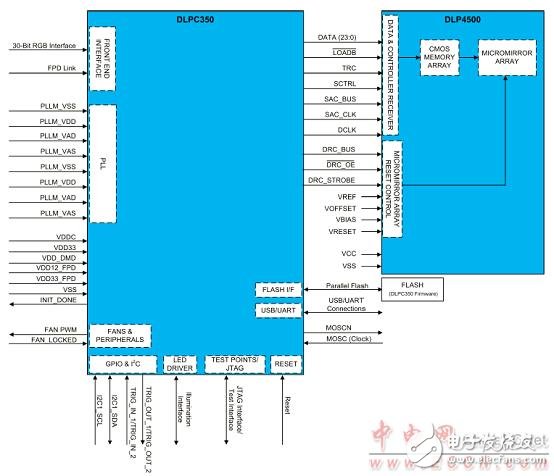
圖1.DLP 0.45 WXGA芯片阻連接圖

圖2.典型系統(tǒng)框圖
DLP 3D打印機
DLP 3-D Printer solutions process successive layers of material to produce a 3-D physical objects. The object is specified by a 3D Computer Aided Design (CAD) model. 3D printer software transforms the virtual 3D model into a series of layers suitable for printing the object.
It is often used to quickly create detailed prototypes. With this technology, printing parts of a material can be done in a single process flow. 3D printers are becoming more affordable for medium and small scale businesses in which rapid prototyping is brought all the way into the office, no longer requiring manufacturing floor space.
Two common methods for 3D printing are digital exposure and laser sintering. The high level principles for incorporating DLP technology into a 3D printing solution can be applied to both methods, but digital exposure is represented in the system block diagram.
For the digital exposure technique, the 3D object is constructed by laying down successive thin horizontal cross-sections or layers of an ultraviolet (UV) curable liquid photopolymer resin. For each layer, the UV light image from the DLP? Digital Micromirror Device (DMD) creates a pattern which hardens the polymer resin where it is exposed to the light.
The cross-section pattern is produced by the individual mirrors that correspond to each pixel on the current layer. This pattern projects through an imaging lens onto the surface of the UV curable liquid photopolymer resin, curing or hardening it where the pixels are on. As depicted in the diagram, one resin is the build material and the second is material to support overhanging features and thin vertical walls during construction. The support material is later removed by heat or dissolved with a solvent or water.
These layers fuse automatically and the process repeats one layer at a time until the model is built. Cure rates are possible under 0.2 seconds per layer. Layer thickness typically ranges from 1um to 250um based upon the resin and wavelength of the UV light used. More detailed images require more discrete cross-sections to assume the continuous smooth surface effect of the resulting object.
The diagram shows a DLP chipset, which includes the DMD, and a DMD Controller chip, plus a DMD Analog Control chip (depending on the specific DLP chipset). DLP chipsets are available with different DMD sizes, pixel pitches, resolutions, and other specifications. DLP also offers devices targeted for use with UV light. The best choice for a DLP chipset may depend on the desired object feature size, patterning speed and necessary wavelengths to cure the resin.
The CAD model is produced by software running on a PC. The system control and signal processing is accomplished by the Embedded Processor (Such as TI OMAP?). Power is provided by TI Power devices. The details of the optical layout and components are not shown in the diagram. The diagram is intended to convey as simply as possible the overall functionality of a DLP-based 3D Printer application. An actual product will require additional optical components and optical design in order to achieve full functionality.
DLP 3D打印機主要特性:
Integrated motor drive routine
Adaptive GUI for customizing layer sequences
Modular system design to port to other DLP chipsets
Block Diagram
Click on the colored blocks to view or sample recommended solutions
圖3.DLP? LightCrafter? 4500開發(fā)模塊外形圖
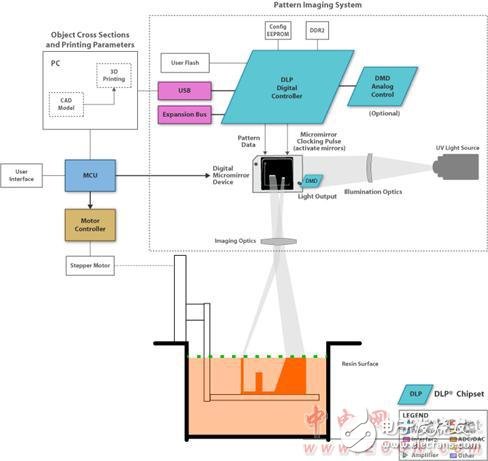
圖4. DLP? LightCrafter? 4500開發(fā)模塊框圖

圖5.DLP 3D打印機系統(tǒng)框圖
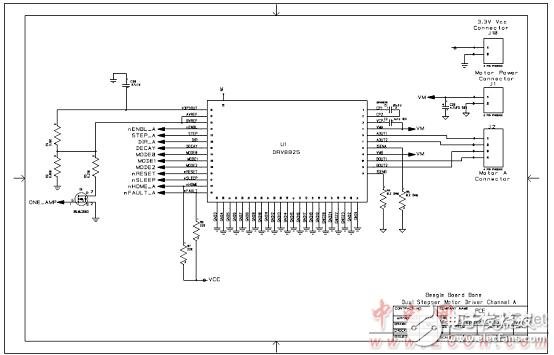
圖6.DLP 3D打印機系統(tǒng)電路圖(1)
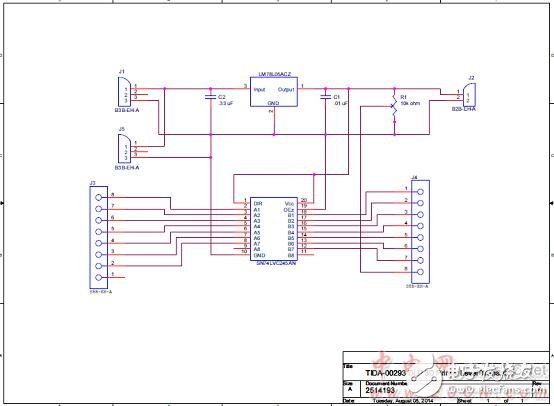
圖7.DLP 3D打印機系統(tǒng)電路圖(2)
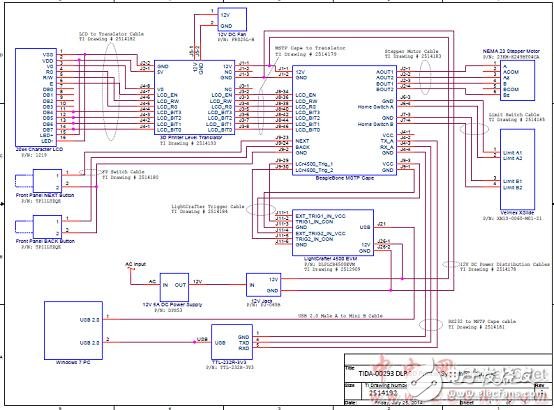
圖8.DLP 3D打印機系統(tǒng)電路圖(3)
DLP 3D打印機系統(tǒng)材料清單:

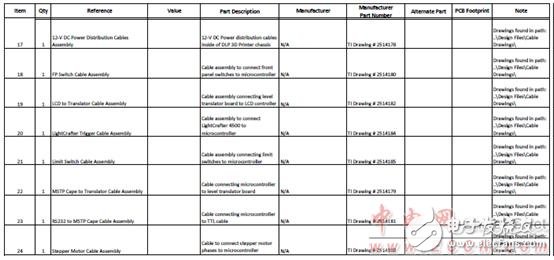
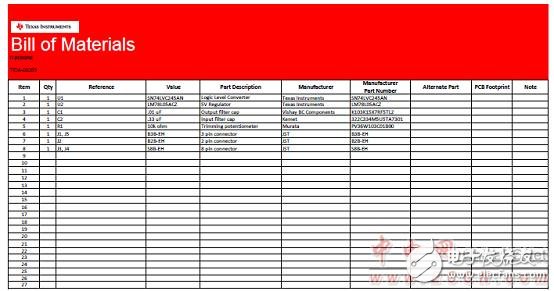

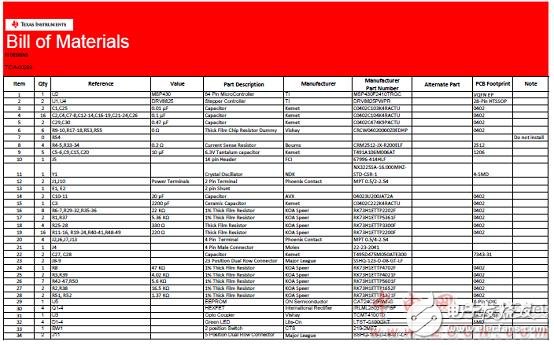
 電子發(fā)燒友App
電子發(fā)燒友App












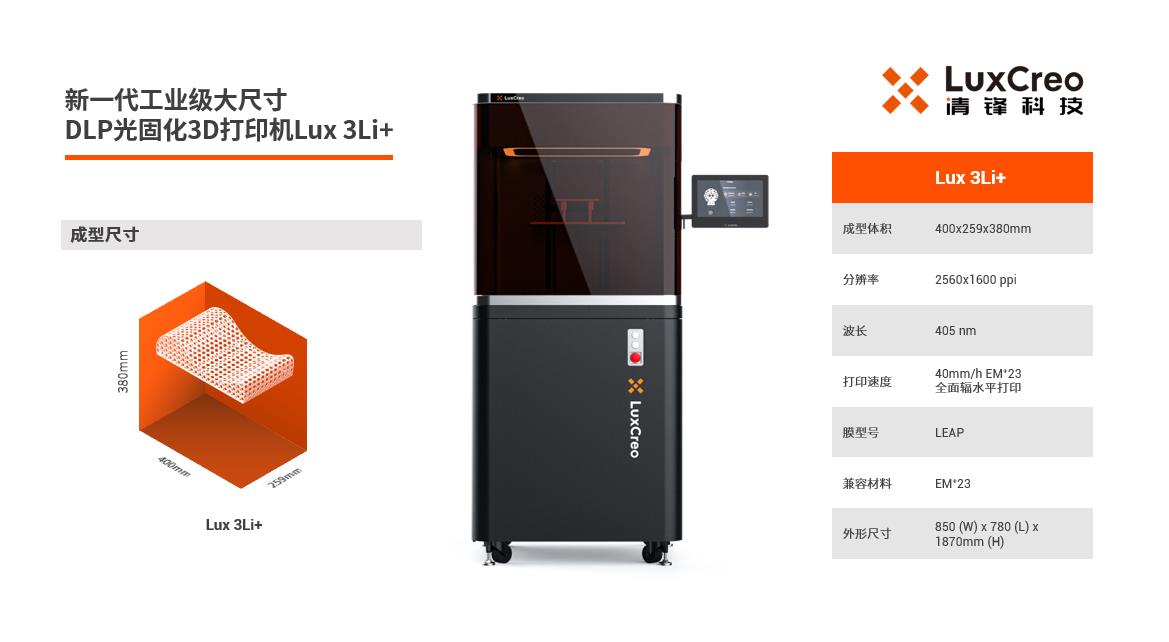

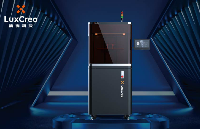















評論